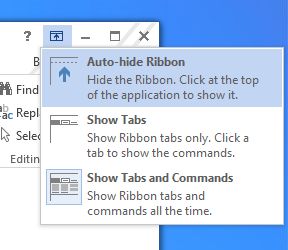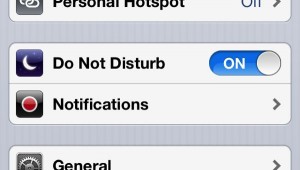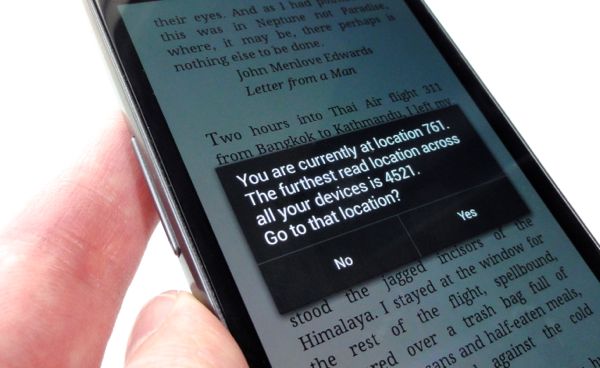Need a little help figuring out your new iMac or MacBook? You’ve come to the right place.
Check out our updated survival guide for the basics on Mac OS X,
including details on the latest “Mountain Lion” features, illustrated
guides for updating and backing up your Mac, must-know tips, and more.
The basics
What is Mac OS X?
It’s the software that powers all the day-to-day features on your
iMac or MacBook. Every time you click a menu at the top of the screen,
open a folder on your desktop, or search for a document on your hard
drive, you have the Mac operating system (or “OS”) to thank.
OK, so what does the “X” in “Mac OS X” stand for?
It stands for “10,” as in the Roman numeral—and specifically, it
means we’re currently using the tenth major version of the Mac OS. Mac
OS X first arrived for desktop Macs way back in 2001, and had been
preceded by—you guessed it—Mac OS 9.

“Mountain Lion” is the latest version of Mac OS X, the software that powers your iMac or MacBook.
What is “Mountain Lion”?
Over the past dozen years, there have been seven big updates to Mac
OS X, and the latest update, 10.8, is nicknamed “Mountain Lion.”
Previous updates to Mac OS X have been named “Panther,” “Leopard,” “Snow
Leopard,” and plain-old “Lion.” Yes, it’s safe to say that Apple has a
thing for felines.
Anyway, Mac OS X “Mountain Lion” (which came out in July 2012) adds
more than 200 new features to the Mac operating system, including a
“Notification Center” with alerts for incoming e-mail and calendar
alerts, voice dictation, text messaging with iPhone, iPad, and other Mac
users, and the ability to “mirror” a newer Mac’s display to an Apple
TV-connected HDTV.
Check out Apple’s rundown of the 200 new features in Lion
right here.
Where to get Mountain Lion
Lion is available for download
from the Mac App Store for $20.

The “About This Mac” window will tell you is your Mac is new enough for Mountain Lion.
Can your Mac handle Lion?
Generally speaking, you’ll need an iMac or MacBook Pro that was
manufactured no earlier than 2007, or a MacBook circa 2008 or later.
Specific iMac and MacBook models have different requirements, however;
click here for more details.
How to install Mountain Lion
The Lion installation process is fairly straightforward, but it will require at least an hour of your time.
Once you purchase Mountain Lion from the Mac App Store, your system
will download the update and alert you when it’s ready to begin the
installation process. Just follow the prompts (there are only a few),
sit back and wait. After a restart or two, your Mac should be all et.
Don’t even thing of updating your Mac’s operating system without
backing up your hard drive first. Luckily, backing up your hard drive is
easy thanks for a Mac OS X utility called Time Machine;
here’s how to use it.
35 must-know Mac tips and tricks

You can pause your Notification Center alerts with a quick swipe and click.
Want a break from all the banners and alerts from the Mac’s new
Notification Center? You put all your notifications on “pause” with a
simple swipe and click.
The Mac’s handy Mission Control feature lets you manage multiple
desktop “spaces” at once, each filled with its own assortment of open
documents and applications. Sounds confusing, I know. But once you get
the hang of it, these additional, virtual desktops can become
addicting—and even essential.
Does scrolling on your Mac feel backwards to you? Blame Apple’s new
“natural” scrolling feature. Luckily, turning it off is a cinch.

Wish you could get your scroll bars back? All you have to do is tweak the right setting.
Hey, what happened to the scroll bars on your windows? Don’t worry—you can get them back in a few clicks.
Want to zoom in on a web page, twirl a snapshot in iPhoto, sneak a
peek at the desktop, or look up the definition of a head-scratching
word? You can do all that and more with a simple swipe, “pinch,” or tap
on your Mac’s trackpad.
Your Mac has a built-in speaking clock that will read you the time
every hour, on the hour—or the half hour, or even quarter hour. Here’s
how to turn it on.

You can add a new Mission Control desktop with a little help from your mouse.
Making a new “space” in Mission Control, the Lion feature that gives
you a bird’s eye view of all your virtual desktops, is easy—if you know
where to look.
There’s a way to assign an app to a specific desktop in Mission
Control, perfect for keeping your programs in their proper “spaces.”
Got a contract or some other document that you need to sign and
return via email? Just snap a photo of your John Hancock with your Mac’s
iSight camera (just about any recent iMac or MacBook should have one),
then paste it into the document you need to sign.
Thanks to the handy Dock at the bottom of your Mac desktop, your
favorite programs, files, and folders are never more than a click
away—and if you know where to look, you can make the Dock behave
practically any way you want.

“Sticky Keys” make for a clever alternative to playing “Twister” with your fingers.
Having a tough time maneuvering your fingertips around multi-key
combos like SHIFT + ALT + DELETE? The “sticky keys” feature in Mac OS X
can help.
Meet “Quick Look,” a handy, built-in Mac tool that lets you take a
quick glance at almost any file or folder without committing to firing
up a program.
Switch applications, take a “quick look” at a file, get help, and more, all without touching your Mac’s mouse or trackpad.
Got a jumble of icons cluttering your Mac’s desktop? Are you desktop
icons too big—or too small? Wish they would just arrange themselves?
Help is here!
Looking to add your own folders to the Mac sidebar? Or perhaps you’d
rather make the sidebar bigger, smaller, or just plain gone. Help is
here!

Just dip into your Mac’s system settings to make the mouse pointer bigger.
Want to save both your eyesight and your sanity? Here’s an easy way:
by dipping into your system settings and boosting the size of the mouse
pointer.
Turn on the Mac’s hot-corner feature to jump to Mission Control,
clear your desktop, and more, all with a simple flick of your fingertip.
It’s easy to “unthread” the mail conversations in your Mac’s Mail
inbox messages—or at least it is once you know the setting you need to
tweak.
Sick of striking the Caps Lock key by mistake? The good news is that turning off Caps Lock for good on a Mac is easy.
How long does it take for your Mac to start up? Too long? Maybe your
Mac is trying to launch too many apps when it’s first starting up.

You can zoom your Mac’s display with a few keyboard combinations.
Squinting at your computer screen? You can zoom the entire display on
your PC or Mac, a handy trick for anyone with iffy eyesight. Here’s
how.
Sick of having Safari pop up when you really wanted another browser,
like Chrome or Firefox? There’s single, centralized place on your Mac
where you can set your default web browser once and for all.
It’s easy to create a folder on your desktop that’ll display only the
files you’ve created or worked with in the past day, week, month … you
name it.
Want to wake up each morning to a freshly brewed pot of coffee and a fully powered-on Mac? It’s easier than you might think.
Want to switch applications, empty the trash, search your hard drive,
or put your Mac to sleep, all without touching your mouse? Read on for
16 keyboard shortcuts that’ll let you zip around your Mac like a pro.

By tweaking a single setting, you can use your Mac’s function keys without having to press and hold the “Fn” key.
On most Mac keyboards, the function keys—you know, those keys along
the top of the keyboard marked “F1,” “F2,” “F3,” and so on—don’t get the
luxury of having an entire key to themselves. Want to switch things
around so you don’t need to press and hold “fn” to use a function key?
No problem.
Want more than just a single home page to appear when you fire up your web browser in the morning? No problem.
Got a bunch of little files that you want to send to a friend? Well,
you could always drag them all into an email and send them as
attachments, but talk about messy. A cleaner, tidier alternative is to
take all those little (or not-so-little) files and compress them into an
archive—or, to be more specific, a “zip” archive.
It’s actually quite easy to convert a Word document into a PDF, and
you won’t have to pay a dime to do it. In fact, here’s the rule of thumb
when it comes to turning documents or even web pages into PDFs: if you
can print ‘em, you can convert ‘em.

Tapping to click takes getting used to, but it’s surprisingly addicting, not to mention easier on your fingers.
Having a hard time clicking the MacBook’s squishy trackpad? If so,
here’s an alternative: setting the Mac trackpad to “click” with a simple
tap rather than an actual click.
Got a file on one Mac that you’d like to send to another Mac just a
few feet away? A built-in Mac feature called AirDrop lets you…well,
“drop” a file from one Mac onto another.
Annoyed that the Mac’s Preview app, and not Adobe Reader, always gets
to open your PDF files? There’s a way to permanently change the
“default” program that opens a given type of document.
Ever wish there were a Print button next to the Reply and Forward
buttons in the Mac’s Mail app, or a pair of Zoom buttons on the top of
every Safari browser window? Well, here’s the thing: you can add,
remove, and rearrange the buttons in the “toolbar” of several familiar
Mac programs.

You can set your wallpaper to change at any interval you choose, from once a day to once every 5 seconds.
Getting tired of the same old wallpaper on your Mac desktop? If so,
try this: just set your Mac to shuffle some or all of your favorite
desktop wallpaper (or “background”) photos, at any interval you choose.
There are actually several different ways to right-click on the
MacBook’s trackpad, which (nowadays, at least) is essentially one big
button.
35 Basics tips for Mac X's You must know
 Are
you a stickler for keeping your receipts? If so, there’s a new feature
in Google Drive for Android that’s right up your alley.
Are
you a stickler for keeping your receipts? If so, there’s a new feature
in Google Drive for Android that’s right up your alley.







































